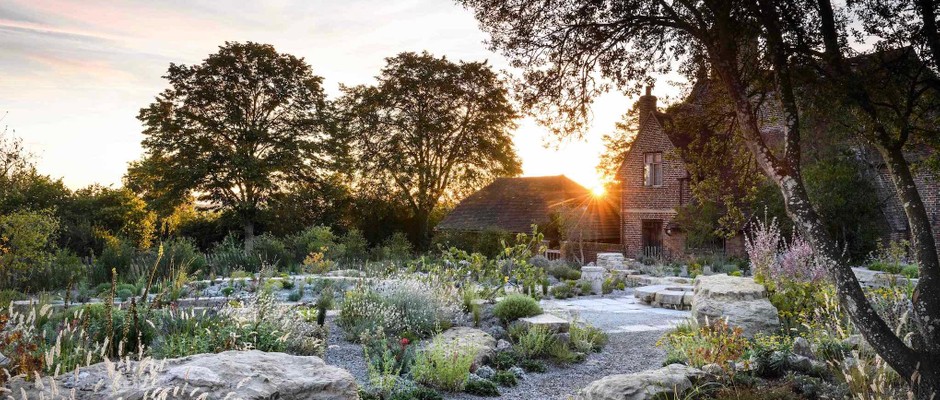
Inside Sissinghurst's Mediterranean-inspired Delos garden
With his new design for Sissinghurst’s Delos garden, Dan Pearson has returned to the original vision of Harold Nicolson and Vita Sackville-West. Words Dan Pearson. Photographs Jason Ingram.
In brief
Name Delos. What Mediterranean-inspired garden at Sissinghurst Castle. Where Kent. Size Quarter of an acre. Soil An altered planting mix comprising ragstone gravel, crushed brick and poor-quality topsoil. Climate Temperate. Hardiness zone USDA 9.
New beginnings
For decades Delos felt like a part of Sissinghurst without a story. Flushing for a moment with spring bulbs, astrantias and martagon lilies, it was a shadowy place on the cold side of a tall wall and a poor neighbour to the brilliance of the White Garden. It was a garden that, through time and circumstance, had lost its way and lost the essence of what Vita Sackville-West and Harold Nicolson had originally dreamed of.
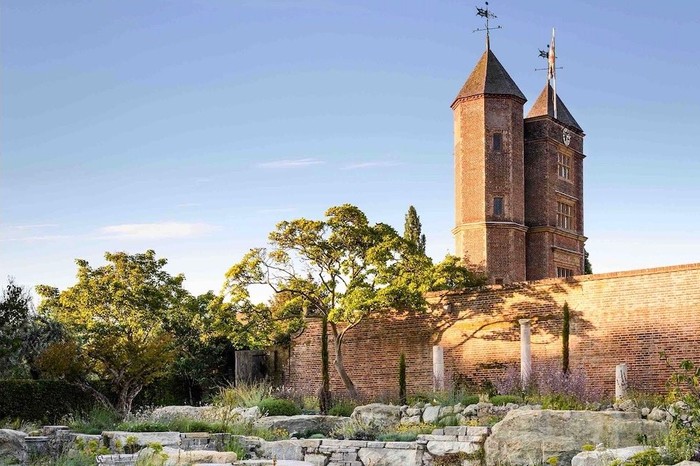
The couple loved the Mediterranean, its landscapes, plants and histories and in 1935 they visited Delos, a small rocky island in the Aegean, considered sacred in ancient Greek culture. The place where Apollo, the sun god, and his twin sister Artemis, goddess of the moon, were born. The remains of the old streets and buildings, now enmeshed with the native phrygana proved such a source of inspiration that, upon their return, Vita and Harold resolved to emulate the atmosphere of the island in one of the garden rooms.
Sissinghurst was known for its romanticism and as the meeting point of Harold’s formal geometries and Vita’s informal plantings. Each garden enclosure had a theme, but Delos must have felt very forward-thinking in its echoing of a real place and with its mood of somewhere wild and foreign. Though there are no plans to speak of, just letters and photographs, by 1937 the garden was mostly finished. It was built with limited resources and featured a repurposed wellhead, terraced beds, broken columns and false ruins made from the remains of demolished medieval and Elizabethan buildings. It also accommodated a number of Grecian altars acquired by Harold’s great-grandfather, which he bought at auction when his family’s Irish home was sold in 1936.
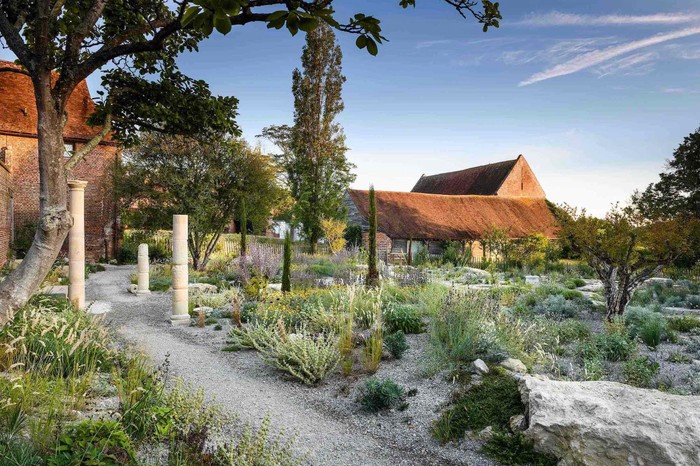
Vita wrote of the garden in 1942: ‘The plan was inspired by the island of Delos, where the ruins of houses have left precisely this kind of little terrace, smothered there by mats of the wildflowers of Greece.’ Sadly the establishment of the garden was hindered by a number of contributing factors. The Second World War was imminent and the head gardener and many of his team were called up, but core to the failure of the garden was its position. A north-facing slope on the wrong side of a high wall with underlying poorly drained Wealden clay. Vita and Harold were learning as they went and the site could not have been more different from the conditions they were hoping to mimic. By 1953 Vita wrote: ‘This has not been a success so far, but perhaps some day it will come right.’
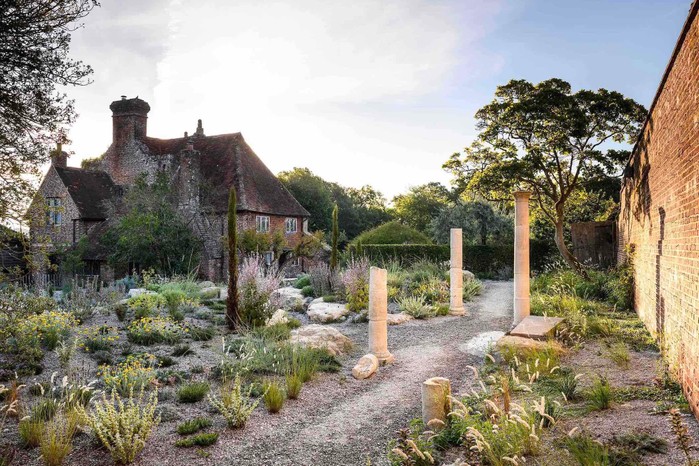
Greek Inspiration
In 2018 Troy Scott Smith, who was then head gardener, approached me to help reinstate the original vision. Drawing extensively from archival documents, as well as notes and photographs made on a recent field trip to Delos by assistant gardener, Joshua Sparkes, we pieced together the elements we believed to be key to the original design, the central formality of the ‘street’, the inclusion of the existing well, the stepped terraces and the altars. Vita had enjoyed the distant views of the sea at Delos and so a viewing position at the highest part of the garden now provides a place where you can capture the long view over the Kentish weald and imagine the distant blue of the Aegean.
To ensure success it was imperative to address the conditions of the site. The north slope was mitigated with new terraces tilted to slope south and harvest the light. The clay was drained and new terraces enabled us to resoil the entire garden with a free-draining mix suitable to a palette of Mediterranean plants. Careful edits to the existing trees let in sunshine, although we retained an original and characterful Quercus coccifera.
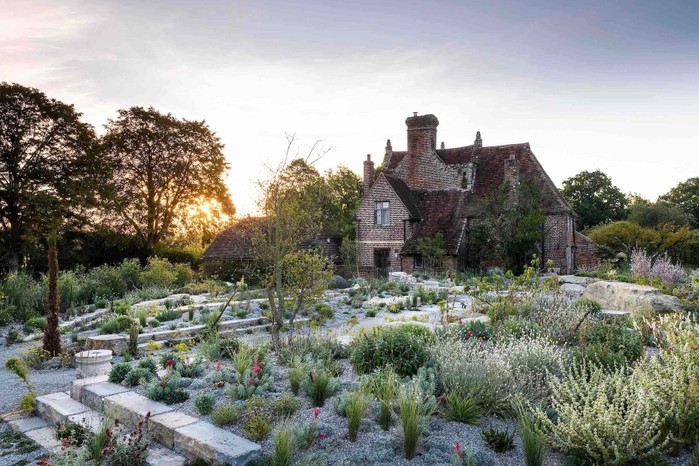
Adapting Delos to England
The planting was designed to inhabit the bones of our new ruins, to feel as if it had arrived there of its own volition in the way that the native phrygana has on Delos. I spent two days with Olivier Filippi at his Mediterranean plant nursery in southern France to get best advice about a palette of Greek natives that would adapt to the British climate. We had addressed the drainage, but it was also important to confront the impact of climate change. Wetter winters and drier summers with no irrigation once the plants were established drove our plant selection. The National Trust has fully embraced this important, educational value of the garden.
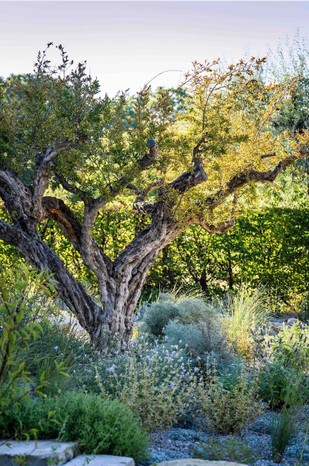
Key trees were positioned to allow light to come into the garden uninterrupted. Quercus suber, Cercis siliquastrum and a specimen Punica granatum provide height, while the shrubby character of the wider Mediterranean garrigue provides evergreen structure with thymes, cistus and lavenders. Open areas have been deliberately left for ephemeral annuals and short-lived perennials, which will colonise the leftover places and crevices to give a feeling of ruins having been occupied by nature. It is a garden the Sissinghurst team will manage to become its own dynamic environment. A place that we hope will do justice to Harold and Vita’s original vision.
Showing item 1 of 20
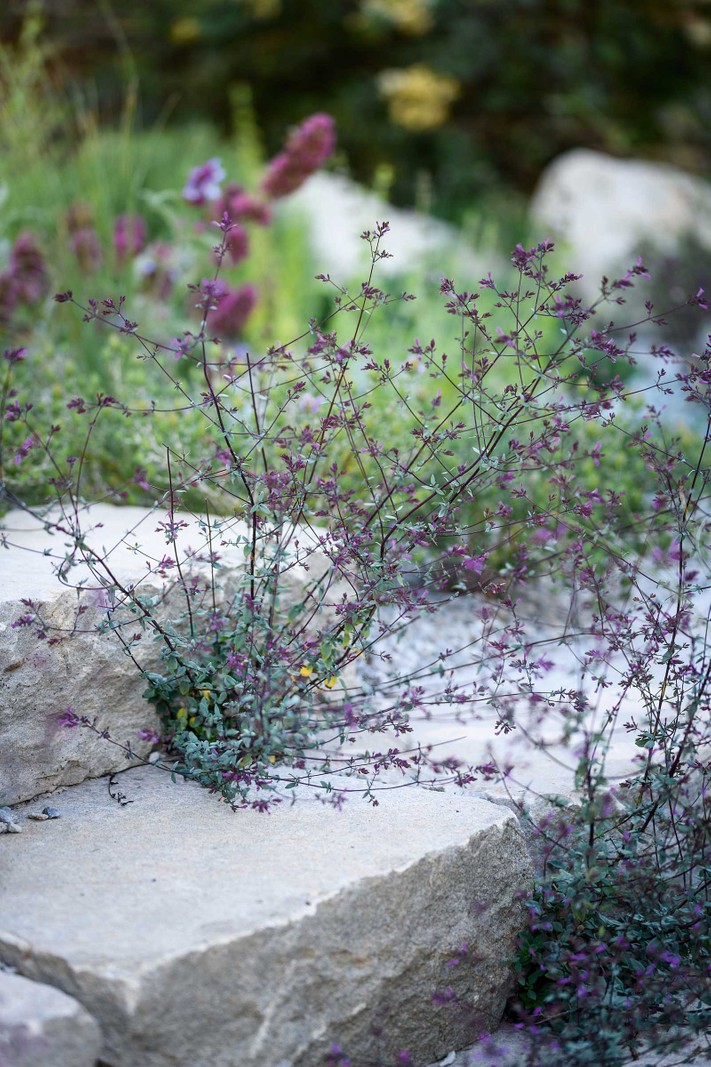
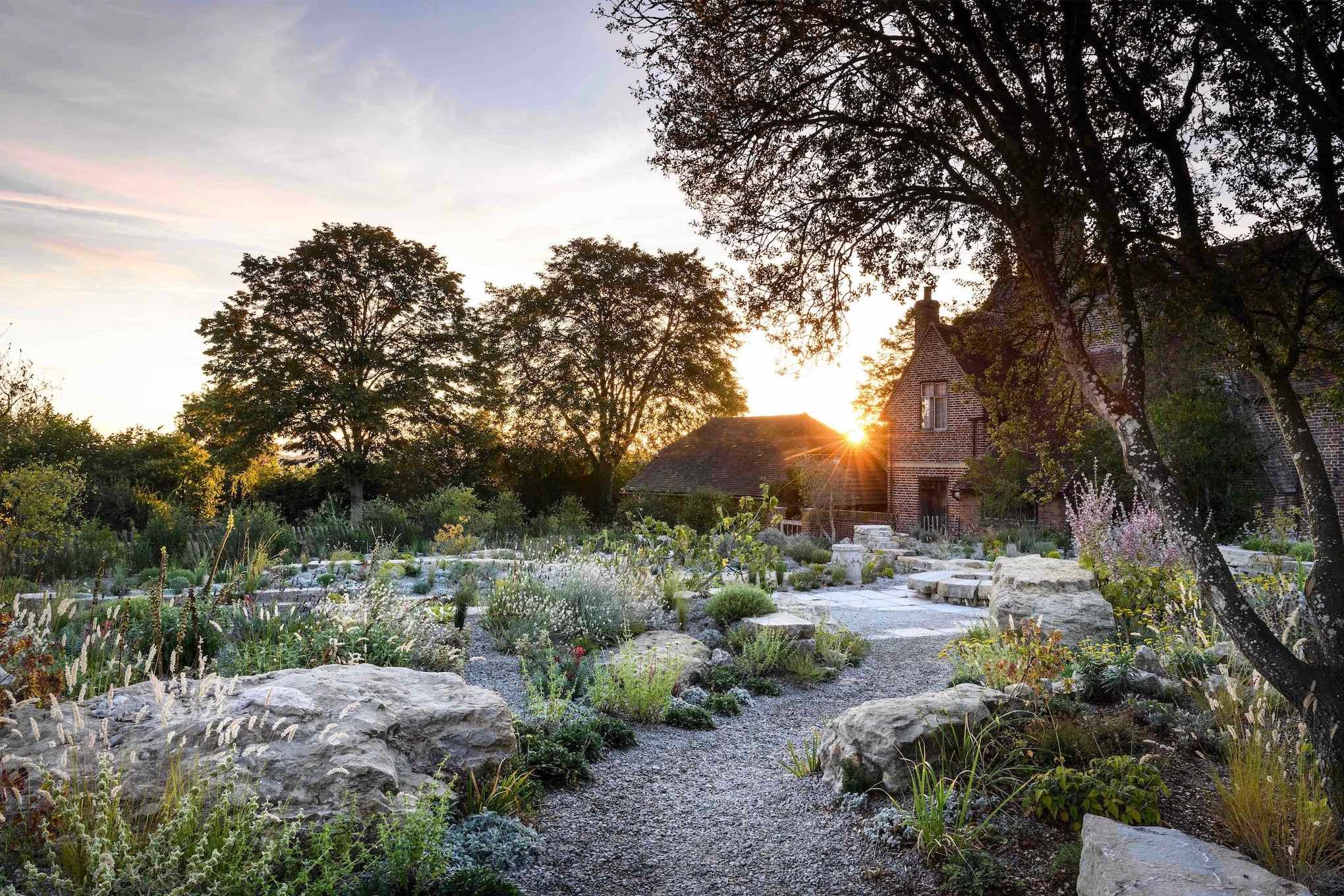
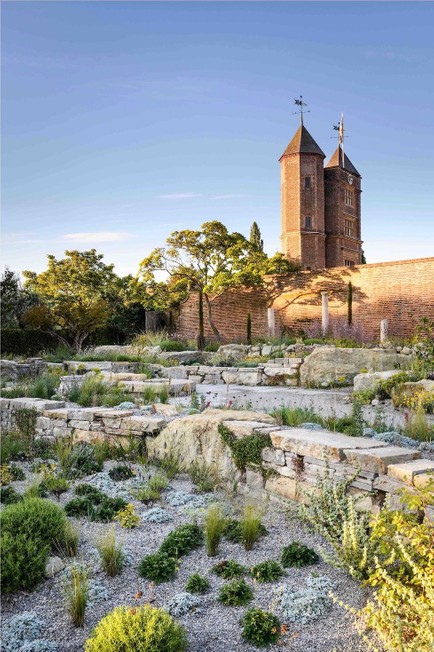
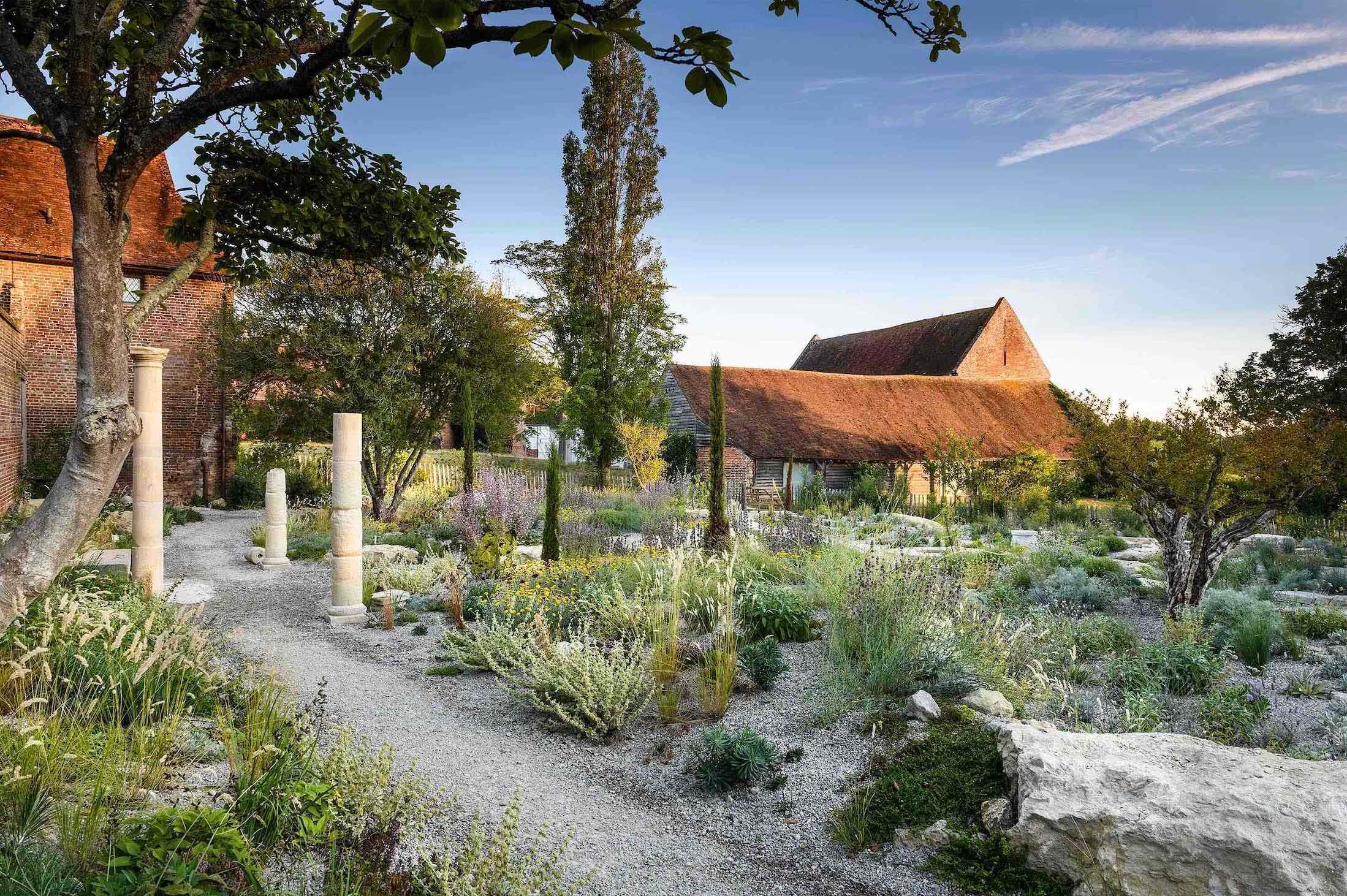
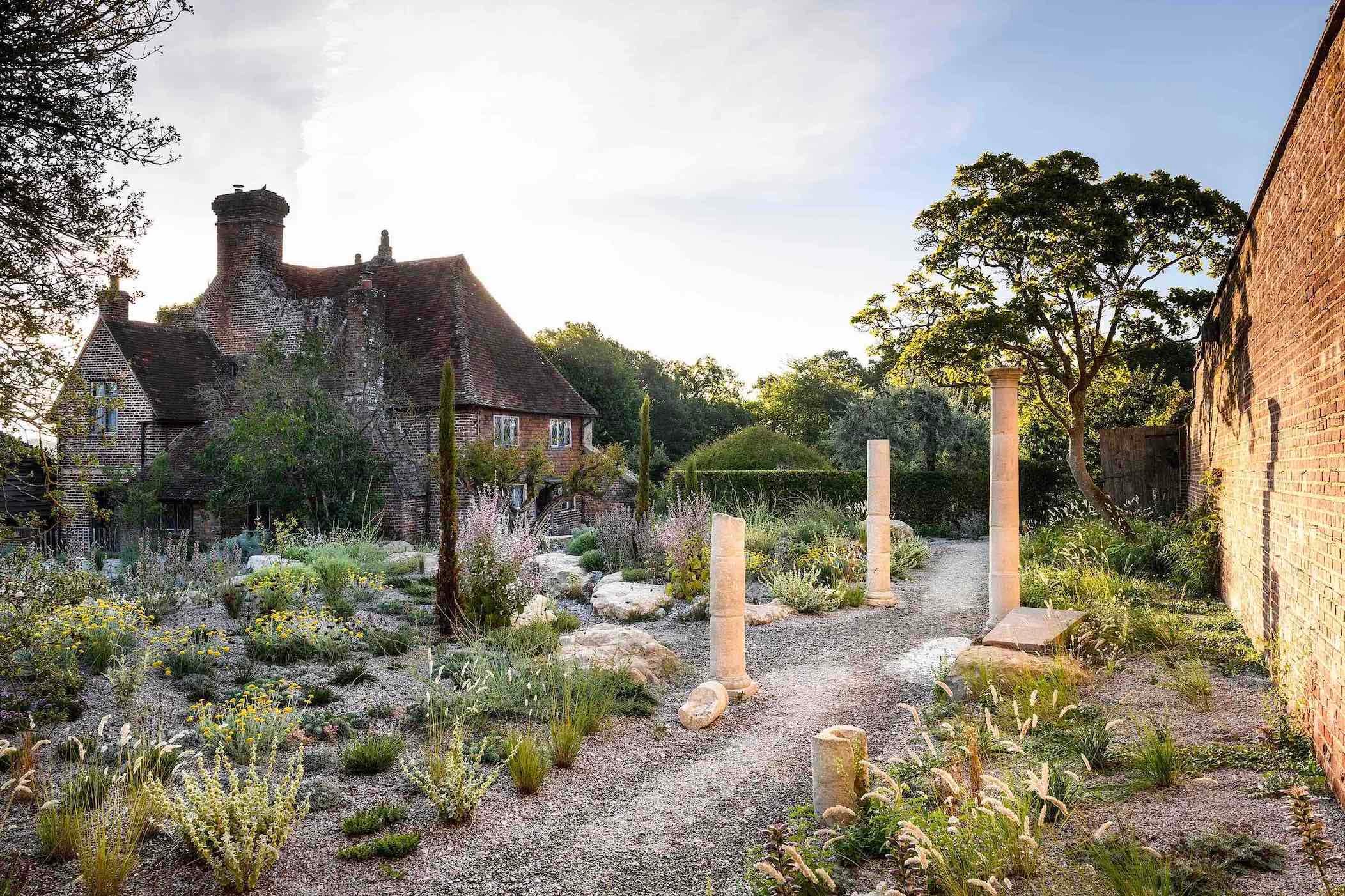
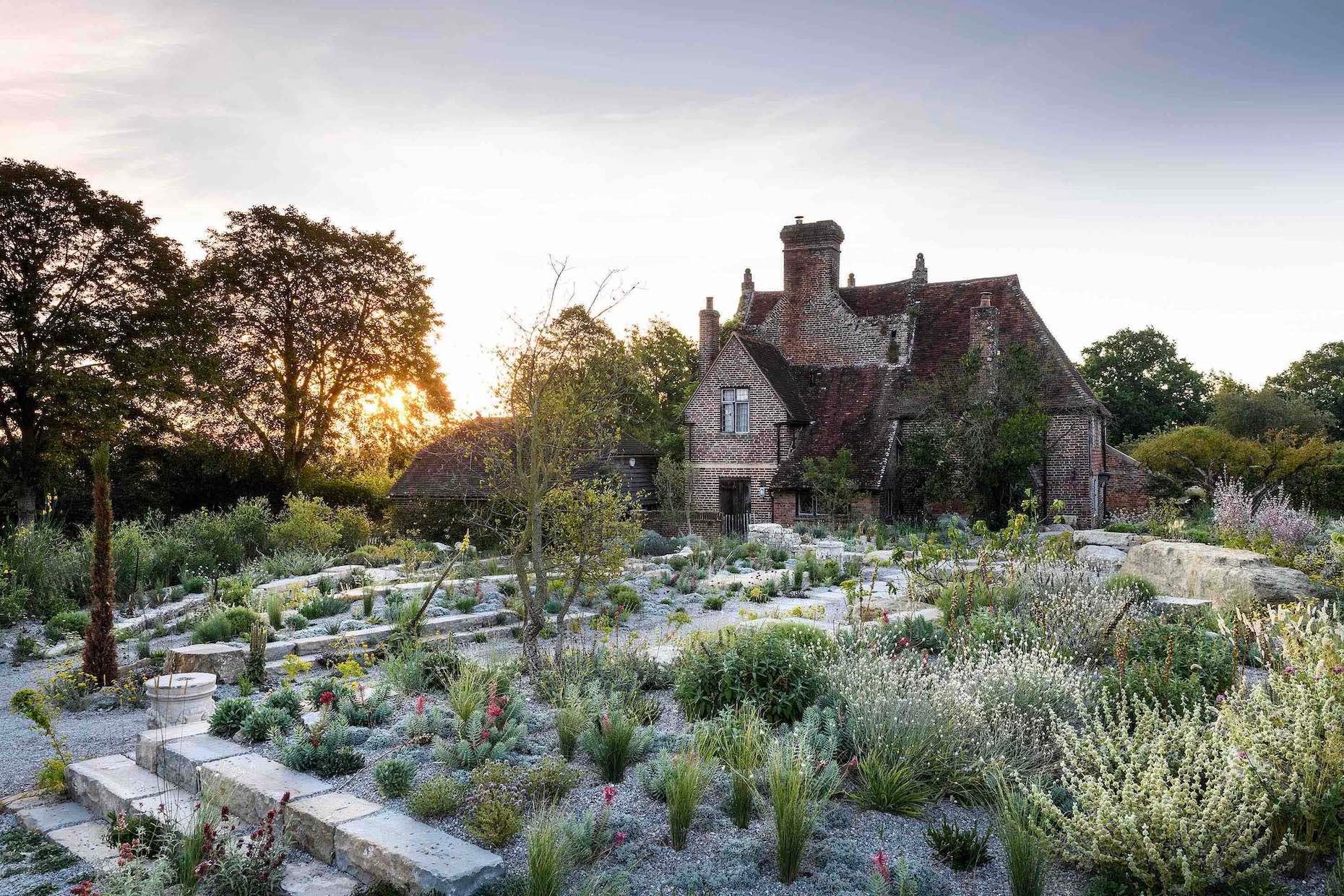
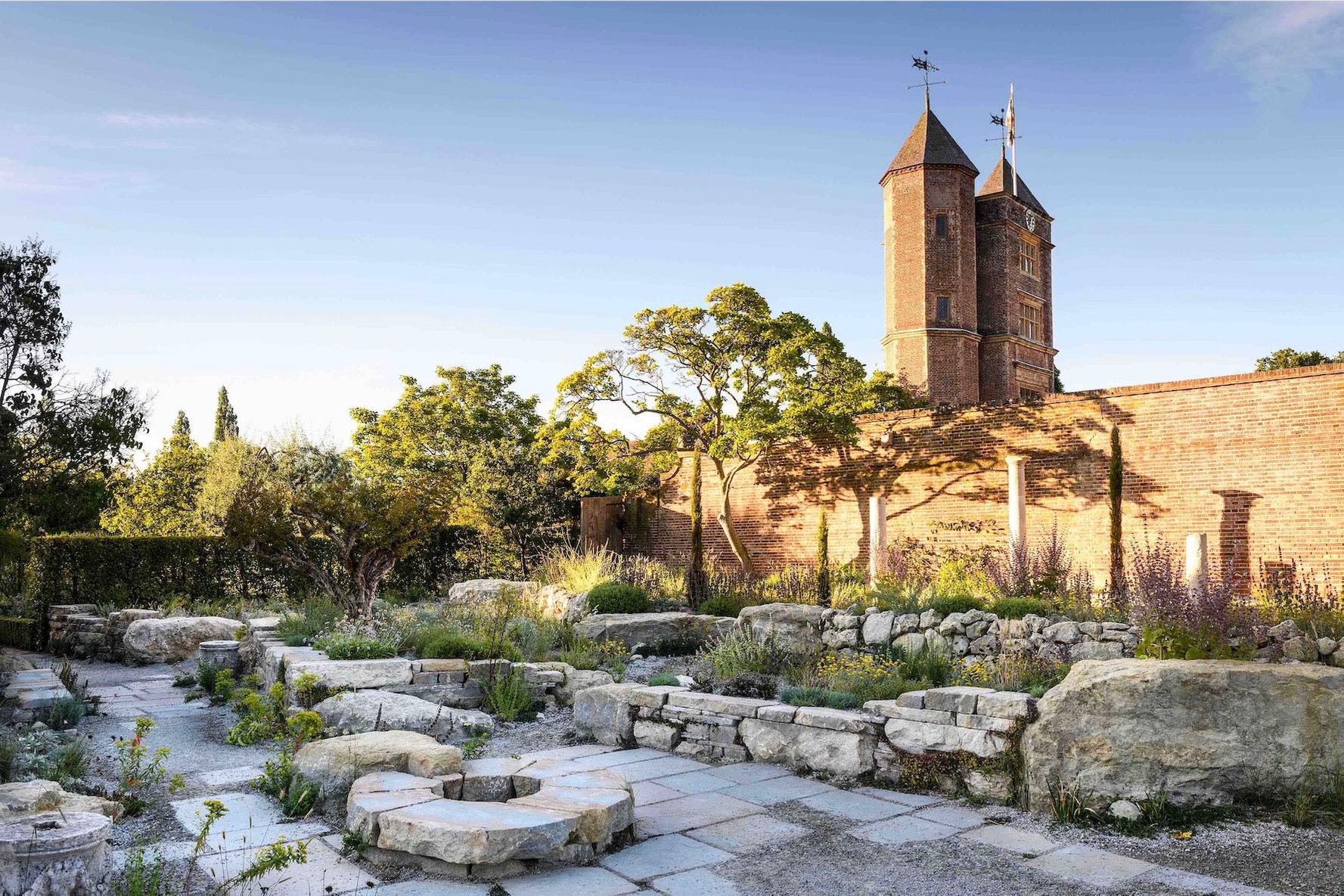
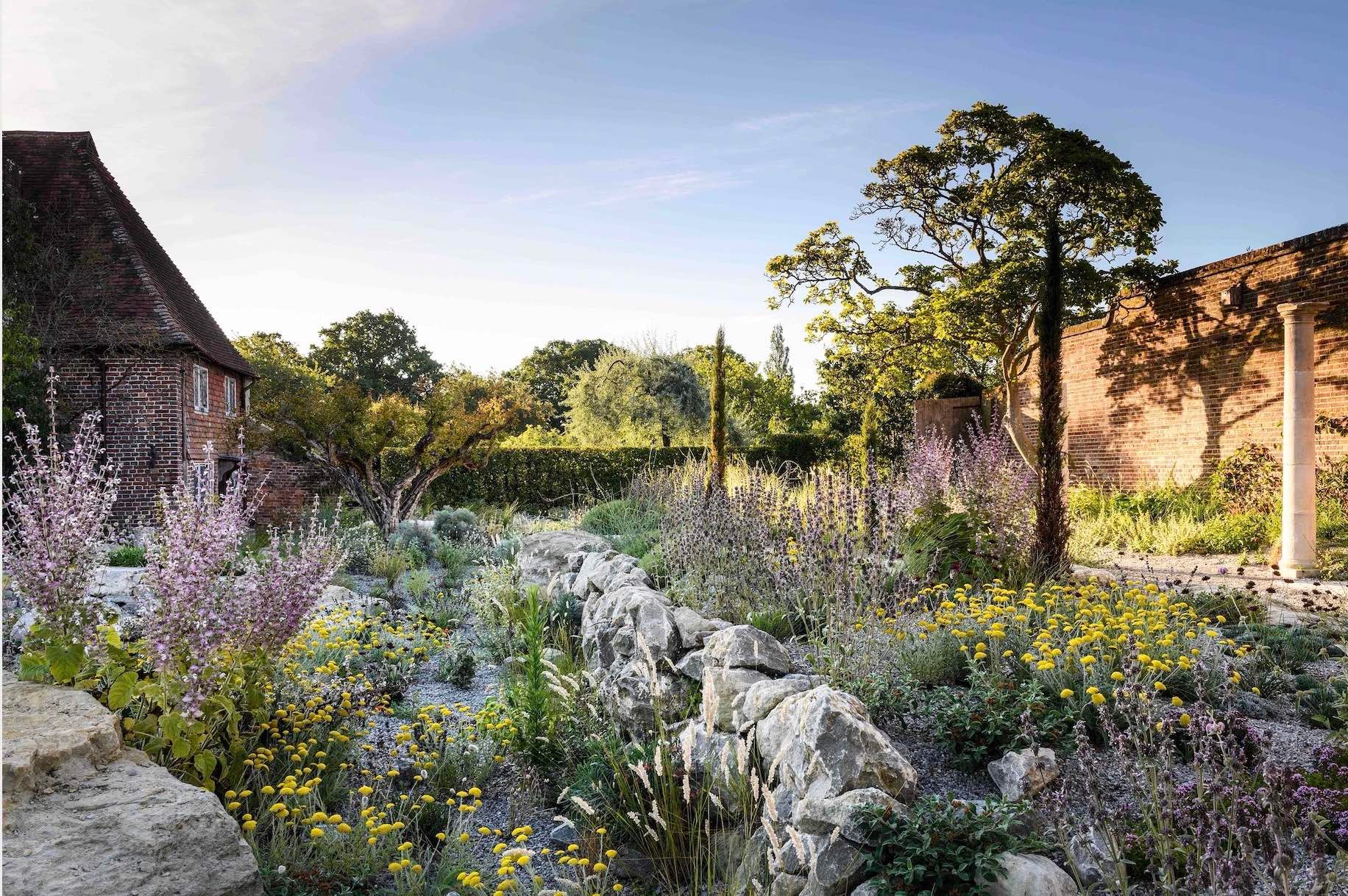
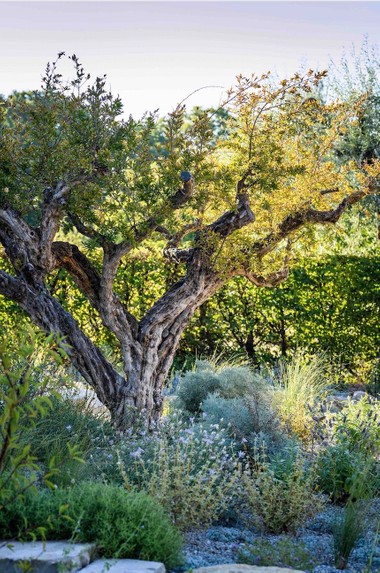
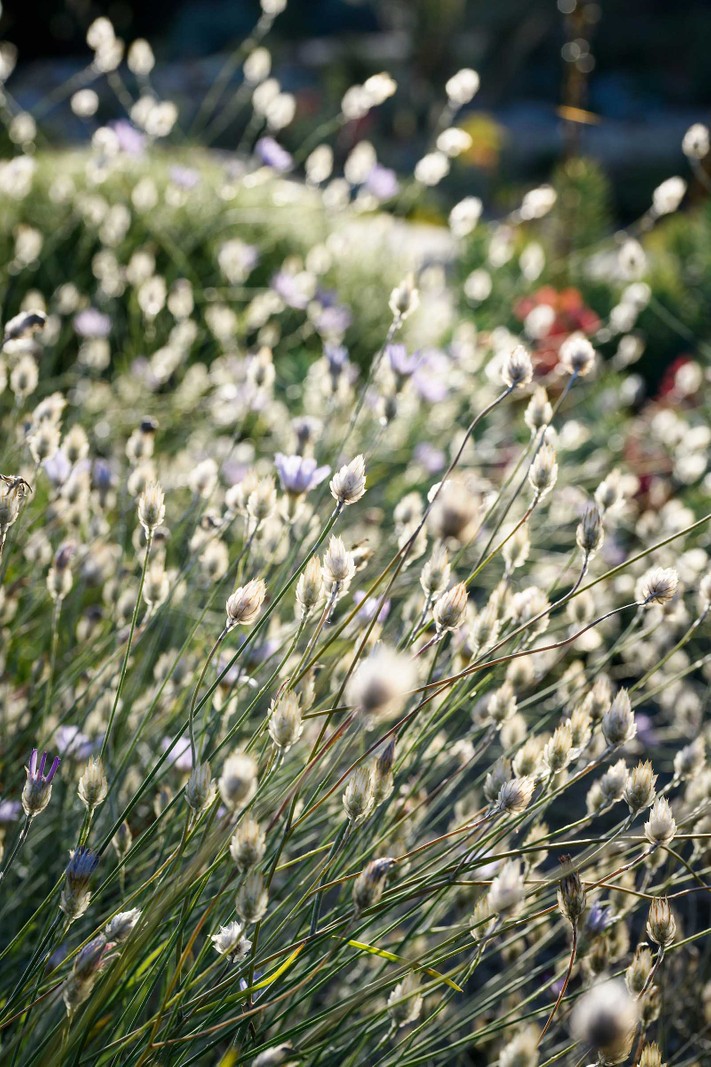
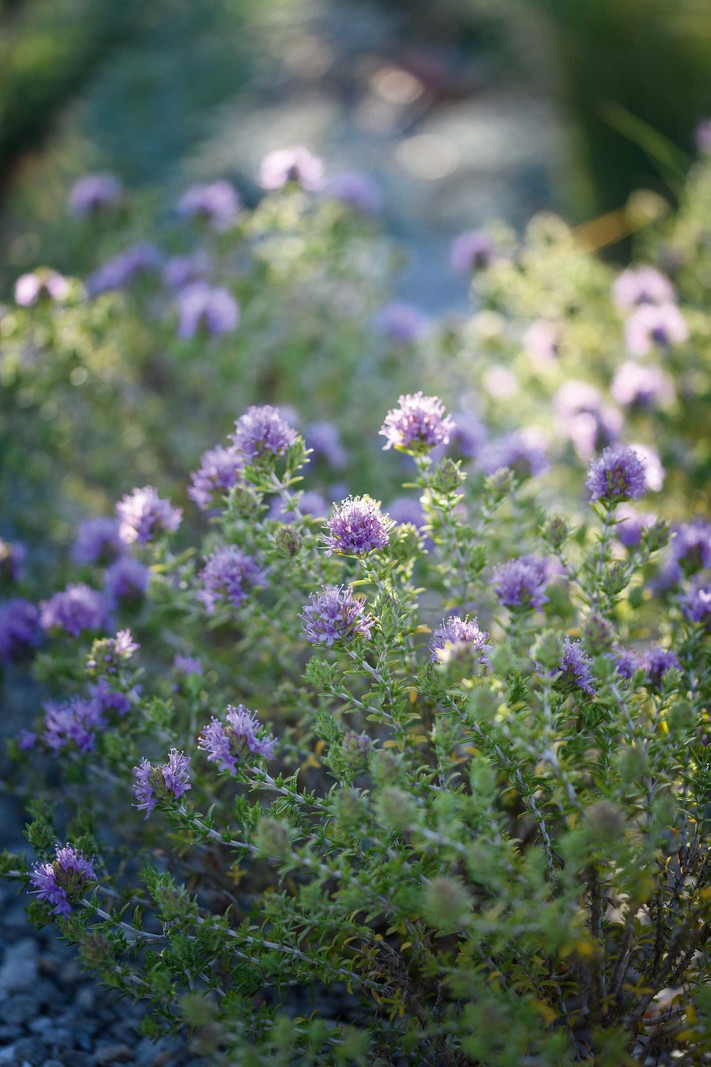
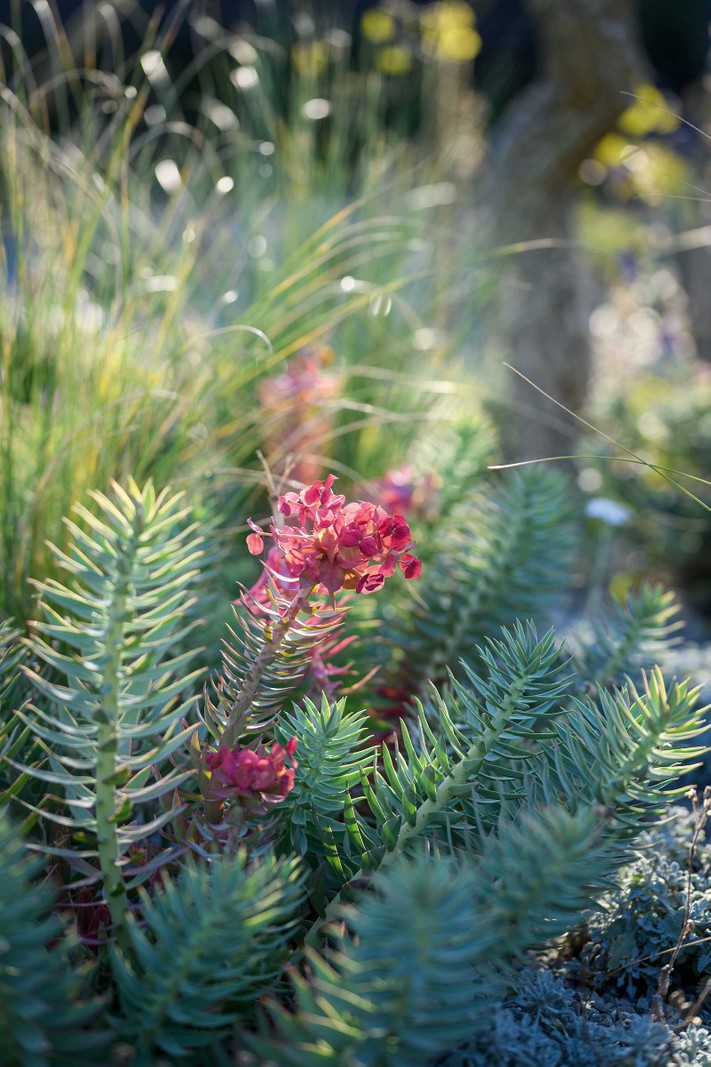


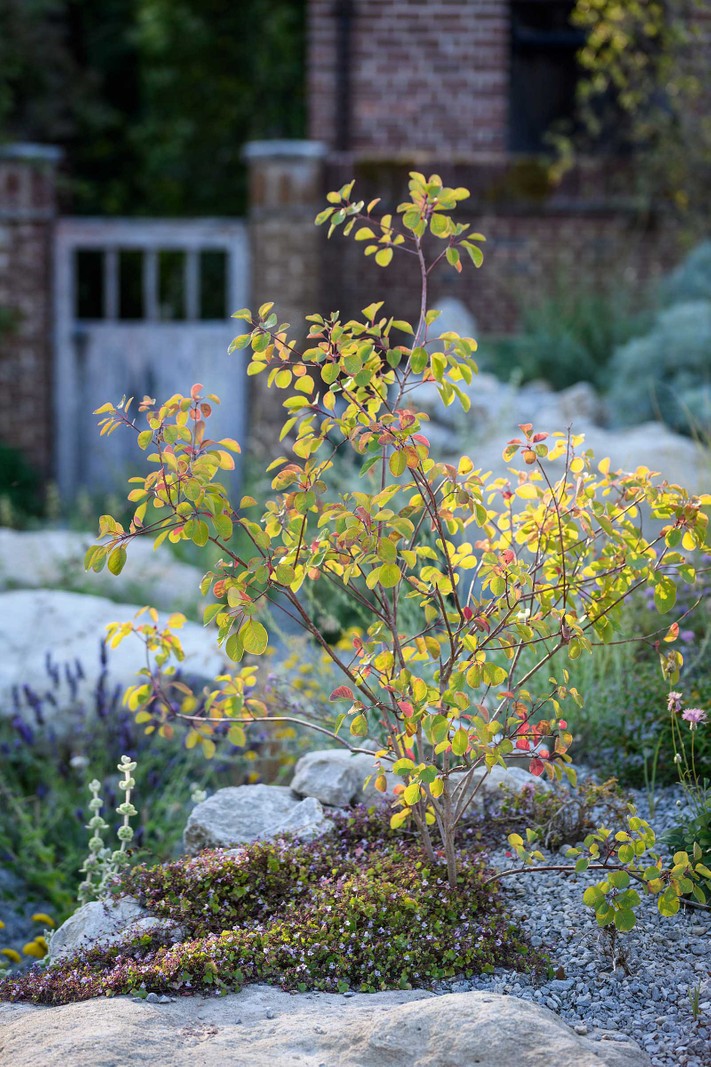

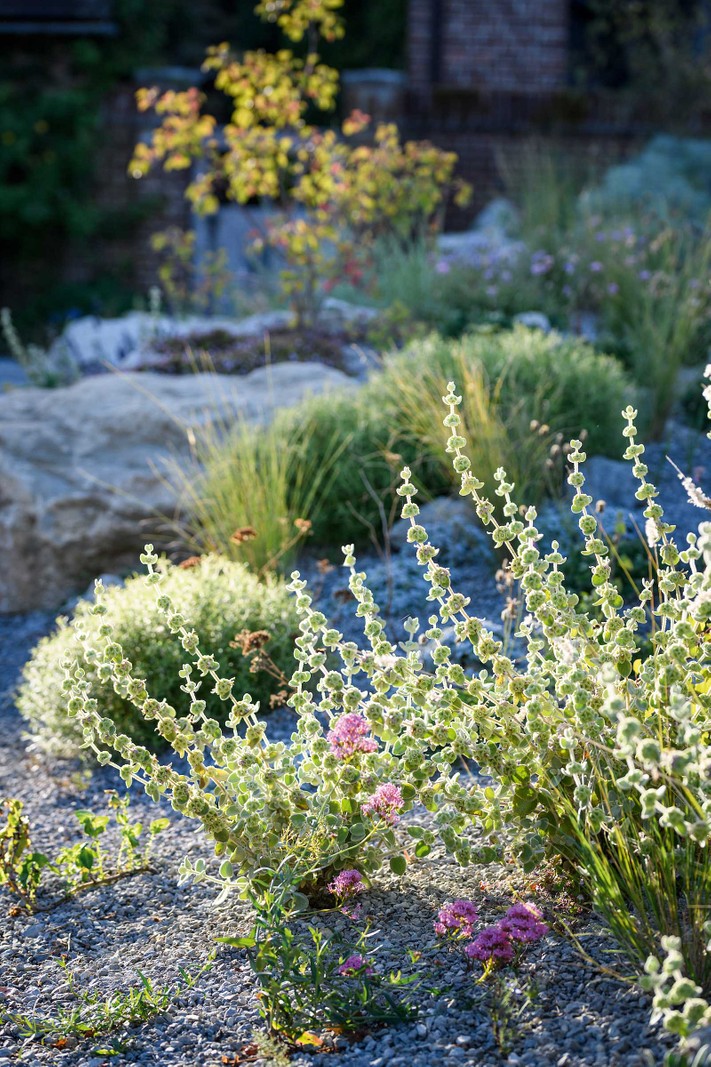
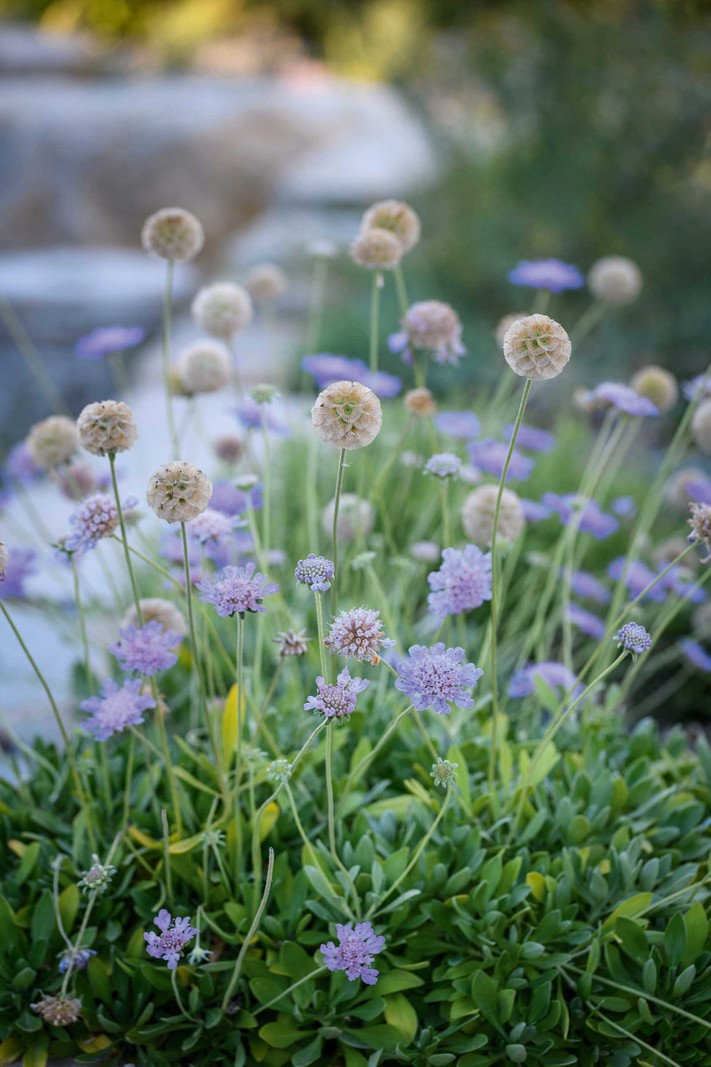
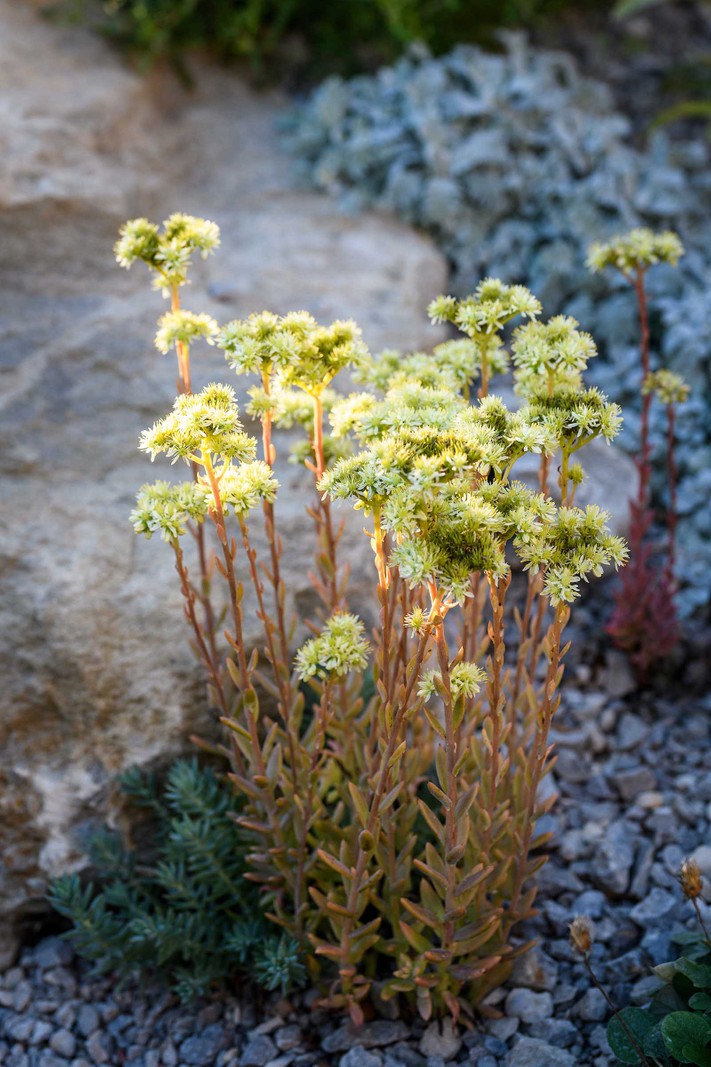
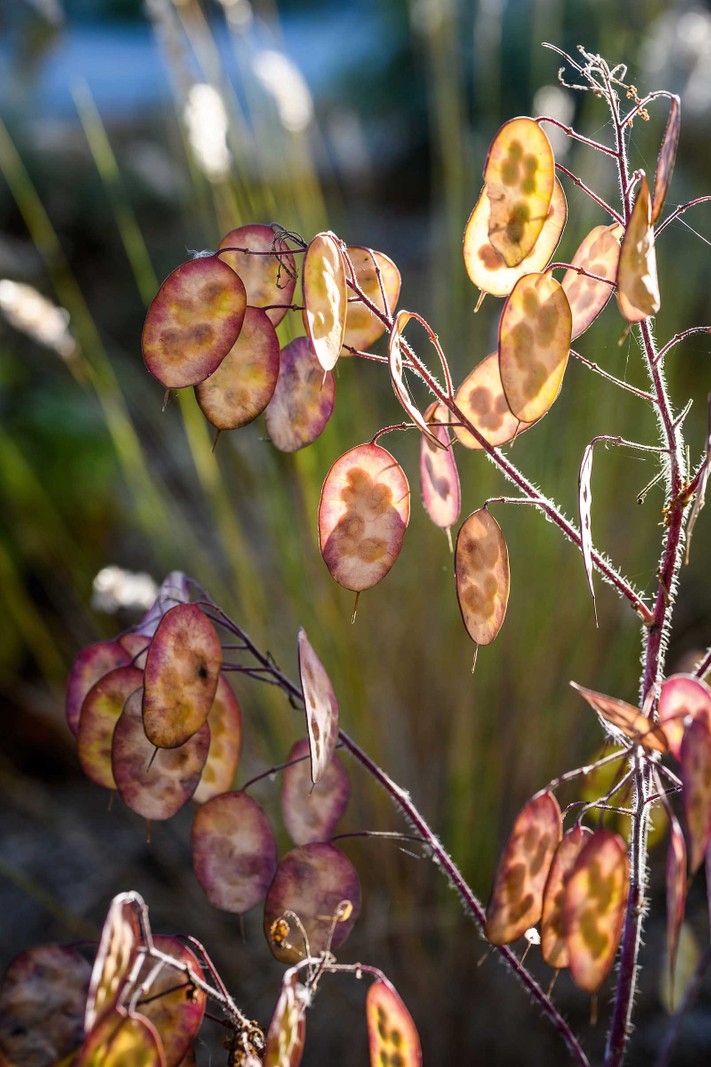





















12 Key Plants
Rhodanthemum catananche 'Tizi-n-Test'
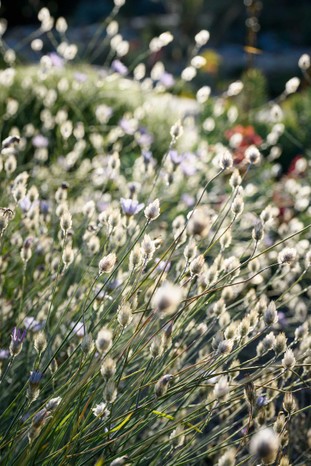
Thymbra capitata
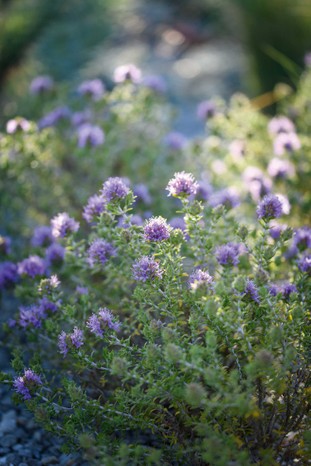
Euphorbia rigida
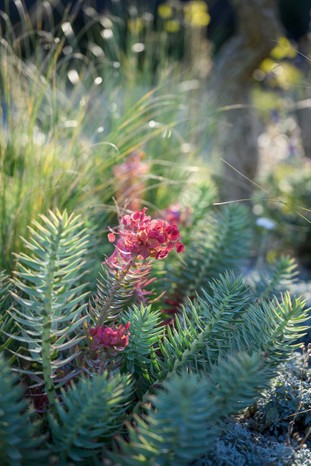
Melica ciliata
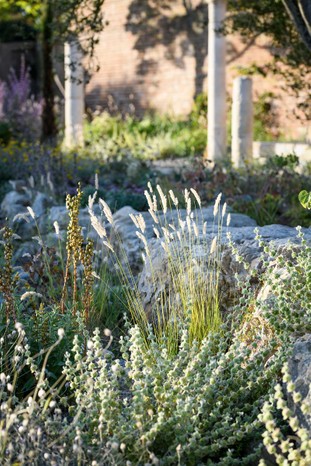
Achillea coarctata
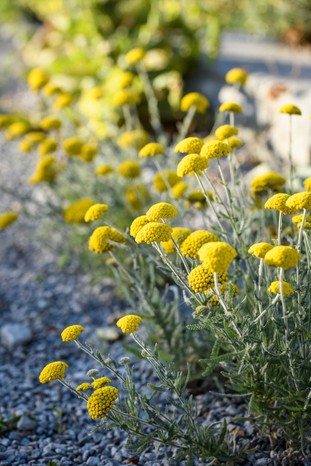
Cotinus coggygria
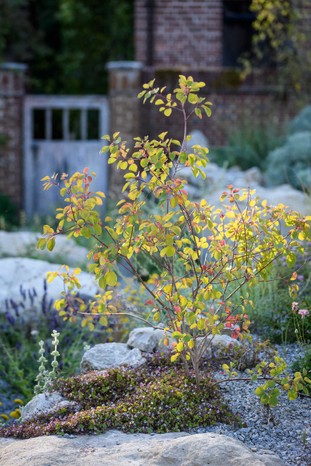
Tanacetum densum subsp. amani
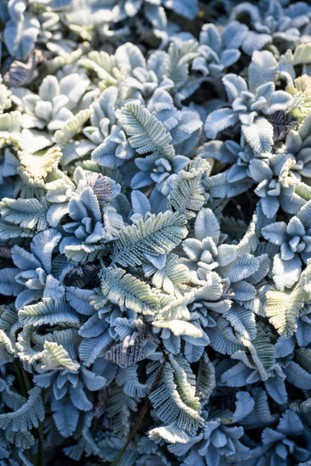
Ballota pseudodictamnus
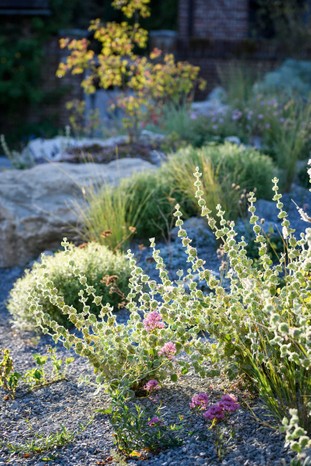
Lomelosia cretica
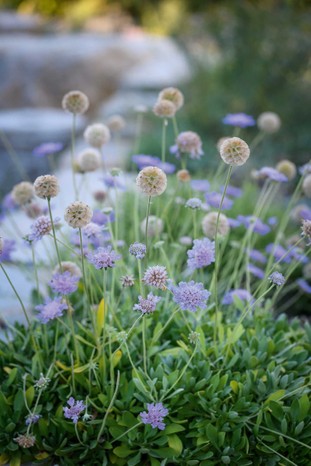
Sedum sediforme
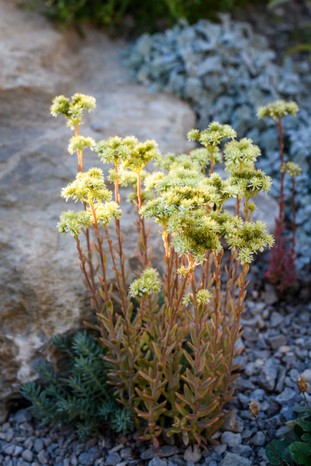
Lunaria annua 'Corfu Blue'
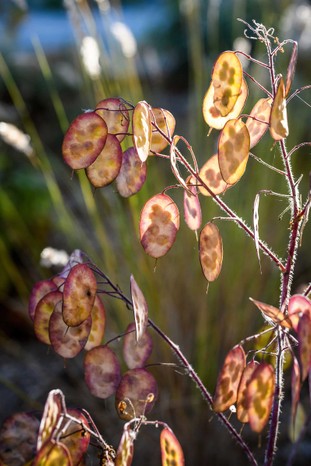
Origanum laevigatum

*Holds an Award of Garden Merit from the Royal Horticultural Society. †Hardiness ratings given where available.
Useful information
Address Sissinghurst Castle, Biddenden Road, nr Cranbrook, Kent TN17 2AB. Tel 01580 710700. Web nationaltrust.org.uk/sissinghurst-castle-garden Open Daily, 11am-5.30pm. Admission £10. Find out more about Dan’s work at danpearsonstudio.com

Niwaki bundle worth £57 when you subscribe
Subscribe to Gardens Illustrated magazine and claim your Niwaki bundle worth £57
*UK only

Container Gardening Special Edition
The Gardens Illustrated Guide to Container Gardening.
In this special edition, discover colourful flower combinations and seasonal planting schemes for pots designed by leading plantspeople, and essential know-how for container gardening success. Just £9.99 inc UK p&pBy entering your details, you are agreeing to our terms and conditions and privacy policy. You can unsubscribe at any time.
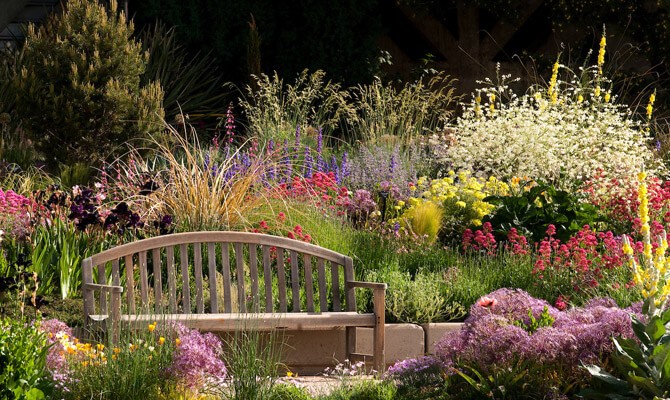
Gardens of the Globe
From botanical wonders in Australia to tranquil havens closer to home in Ireland, let this guide help you to discover some of the most glorious gardens around the world
By entering your details, you are agreeing to our terms and conditions and privacy policy. You can unsubscribe at any time.




